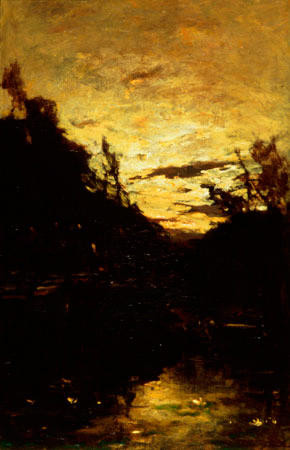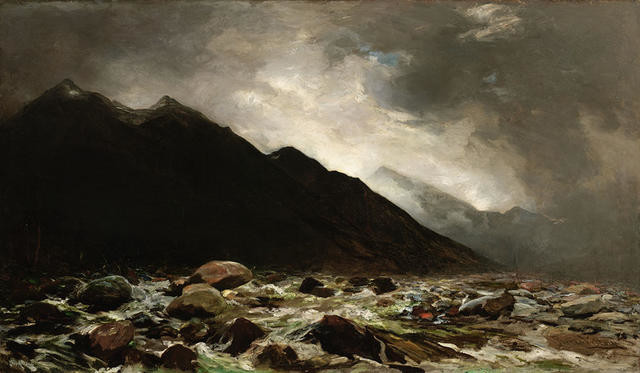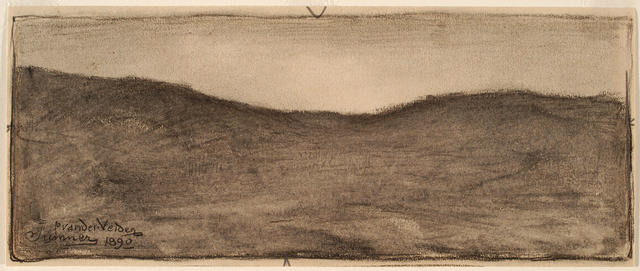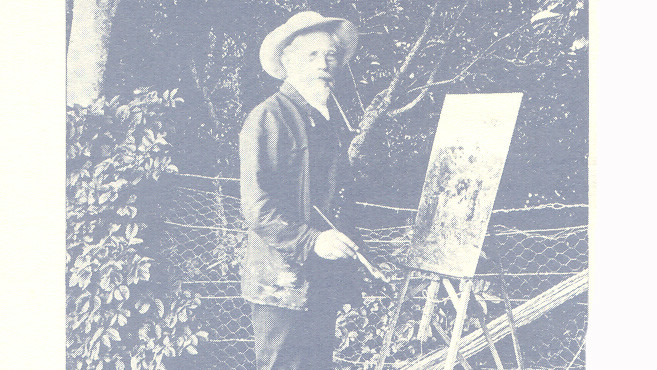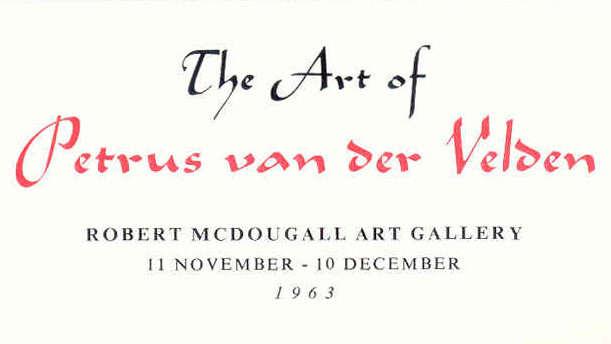Colin McCahon
Aotearoa New Zealand, b.1919, d.1987
As there is a constant flow of light we are born into the pure land
- 1965
- PVA on board
- Purchased with assistance from Queen Elizabeth II Arts Council, 1982
- Reproduced courtesy of Colin McCahon Research and Publication Trust
- 655 x 1870mm
- 82/73
Tags: horizon line, landscapes (representations), natural landscapes, words
‘As there is a constant flow of light we are born into the pure land.’ Colin McCahon quoted this text often on works between the mid-1960s and early 1970s: he took it from the writings of a twelfth-century Japanese Buddhist monk, Shinran, who was the founder of a tradition known as Pure Land Buddhism. McCahon had long been interested in light as a metaphor both for faith and enlightenment, and had begun a related series of dramatic semi-abstract waterfall paintings in 1964, in which a curve of white light cleaved through darkness. Here the landscape element has been reduced to a simple horizon, a dividing line between sky and sea, or sky and land, at the very edge of vision. (March 2018)
Exhibition History
McCahon / Van der Velden, 18 December 2015 – 7 August 2016
“I was very lucky and grew up knowing I would be a painter. I never had any doubts about this. I knew it as a very small boy and I knew it later. I know it now when it is too late to turn back and only wish I were a better painter. Painting to me is like lambs born in the spring, rain, wind, sun. Like chopping down trees in the wilderness and living with the slaughtered stumps, of not seeing the beauty I look for, and also seeing the beauty of another world – of words. I talk all my paintings to myself.” —Colin McCahon
Brought to light, November 2009- 22 February 2011
When it was purchased in 1982, this work divided public opinion. A local radio station even invited listeners to produce their own mocking copies of paintings by Colin McCahon. But in contrast to the public debate that surrounded it, this painting is serene and luminous. The notion of ‘constant flow’ is central to Buddhist teachings, and a related tradition is known as ‘pure land’ Buddhism. McCahon is well known for his exploration of Christianity, but his originality lies especially in paintings like this one, where he brings together forms and ideas drawn from many different spiritual traditions.
Stripped bare of identifying features, Colin McCahon’s painting does not refer to any particular place. Rather it is universal - the symbolic treatment giving a sense of the land’s past, present and future. McCahon uses dark and light as symbols for good and evil, heaven and earth, life and death. McCahon’s creative beliefs fitted well with Abstract Expressionism, a style that is fundamentally introspective, passionate and often concerned with personal spirituality. McCahon is now widely regarded as New Zealand’s most important modern painter. He was born in Timaru and studied art in Dunedin, first exhibiting his work in 1949. He spent time in Christchurch and Nelson but moved to Auckland in 1953, working first at the City Art Gallery, then at the University of Auckland School of Fine Arts. In 1970 he resigned from teaching to paint fulltime. McCahon died in Auckland. (Opening Gallery hang, 2003)
Colin McCahon is now widely regarded as New Zealand's most important modern painter. He did not subscribe completely to non-figurative abstraction recognising that, for many of his artistic statements, he would also "need words". As you see in this work, however, the words are given the same attention in colour and brushwork as any other element in the painting. How they are painted adds considerably to the meaning the painter intended you to gather from the statement.
The phrase "As there is a constant flow of light we are born into the pure land" was used quite frequently in McCahon's works of the mid 1970s. There is a clear spiritual message in this statement, and here he has used it in the centre of three blocks or panels. This invites us to read them left to right as a sequence or narrative. We are led from the dark to the blazing light of day as it floods across the horizon and fills the land at our feet. Beyond it is all dark again. The future is unknown.
Colin McCahon, who was born in Timaru in 1919, studied art in Dunedin. He painted for some time in Christchurch and Nelson before moving to Auckland and a position at the Auckland City Art Gallery. By 1975, when he painted this work, he had left his teaching position at the University of Auckland School of Fine Arts and was painting full-time from his studio at Muriwai Beach on the west coast, north of Auckland. (Label from before 2002)
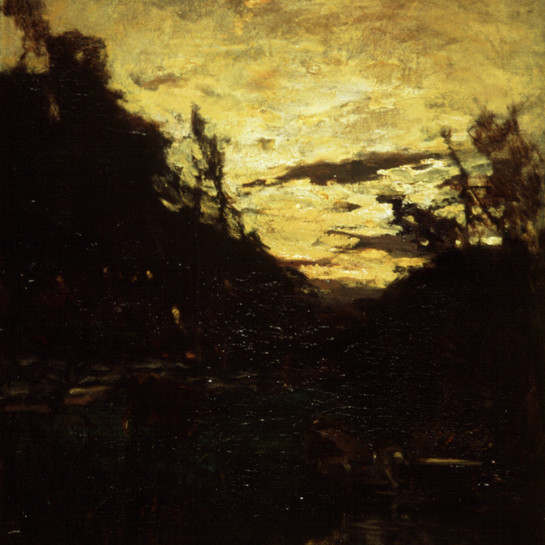
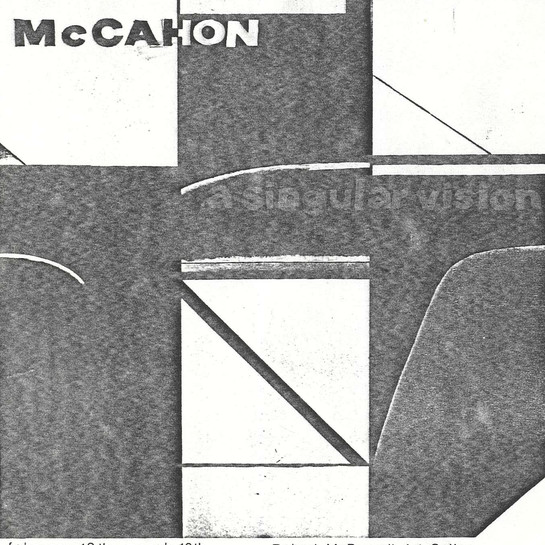
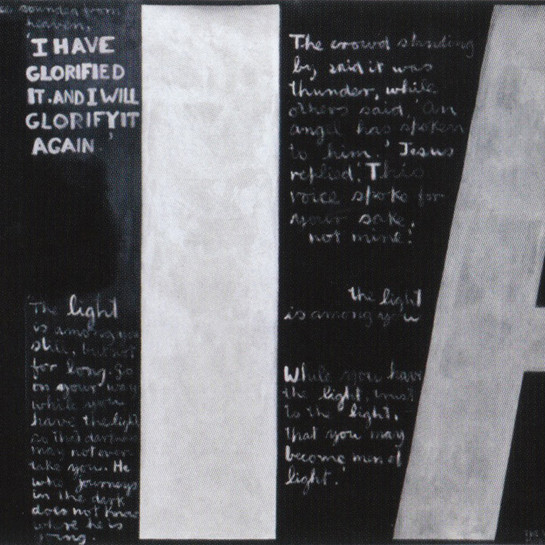

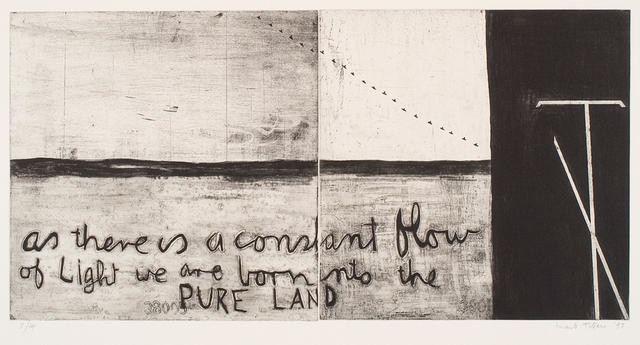
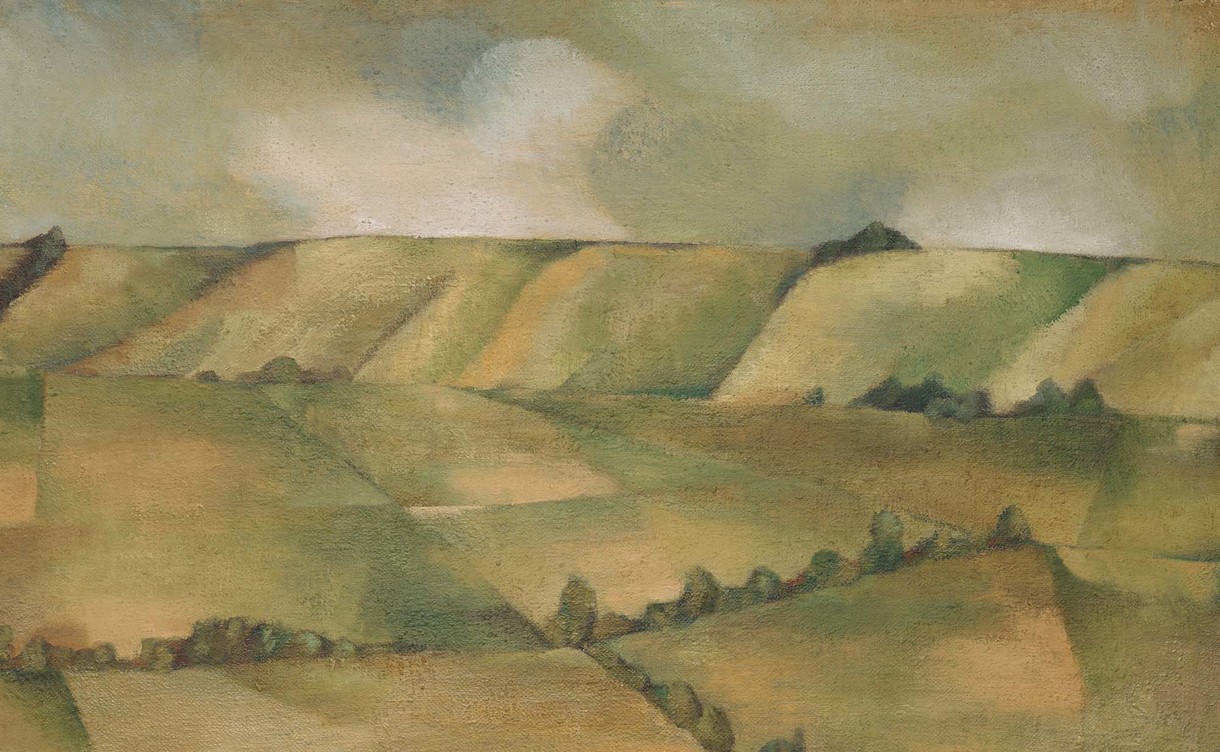
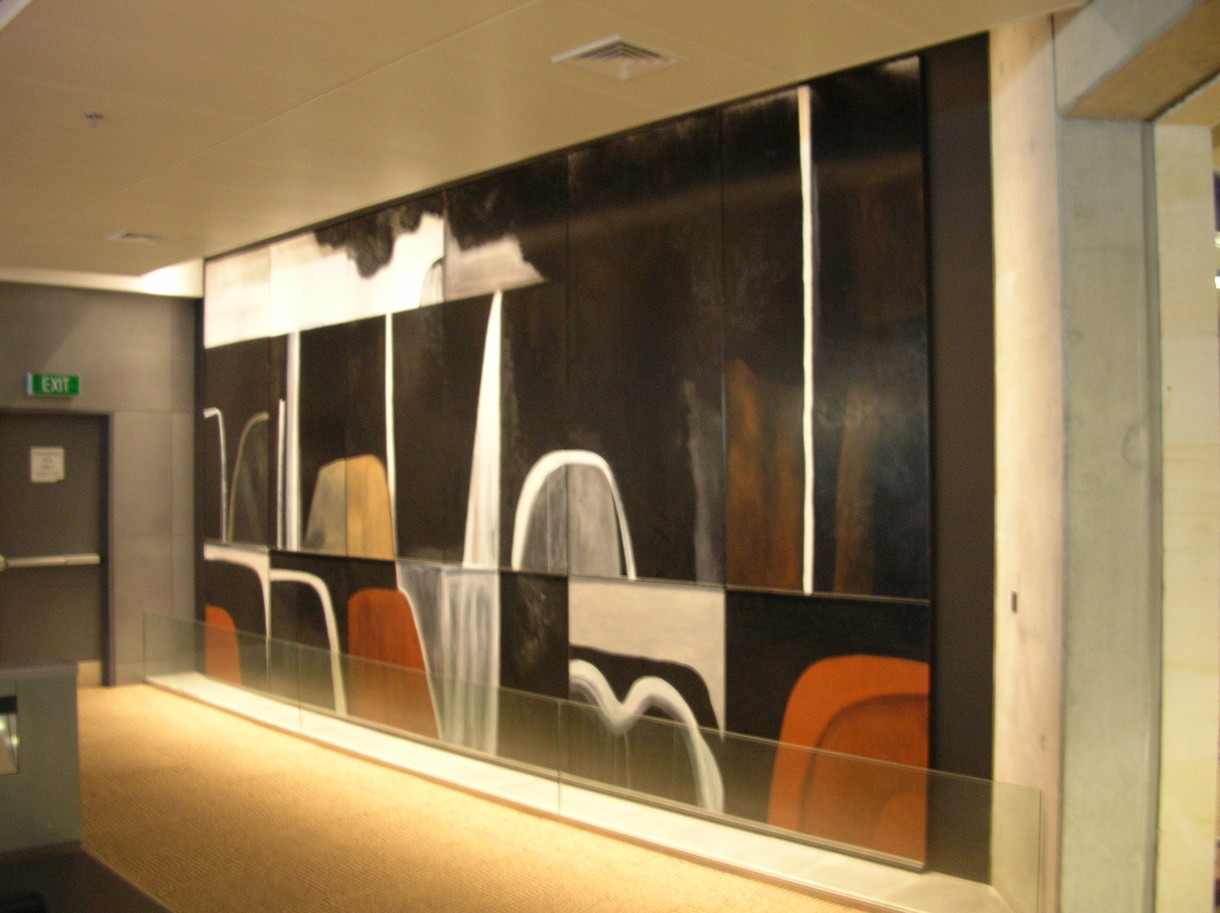
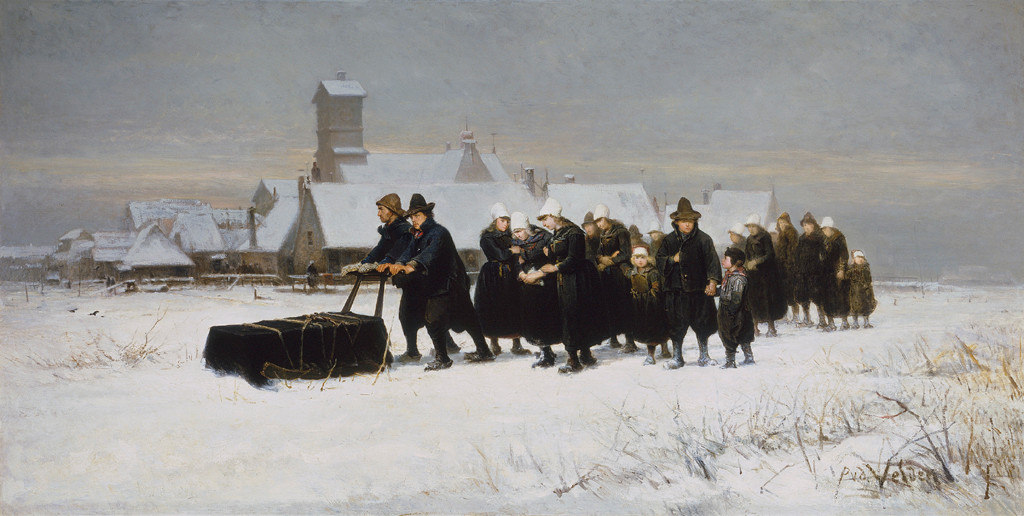
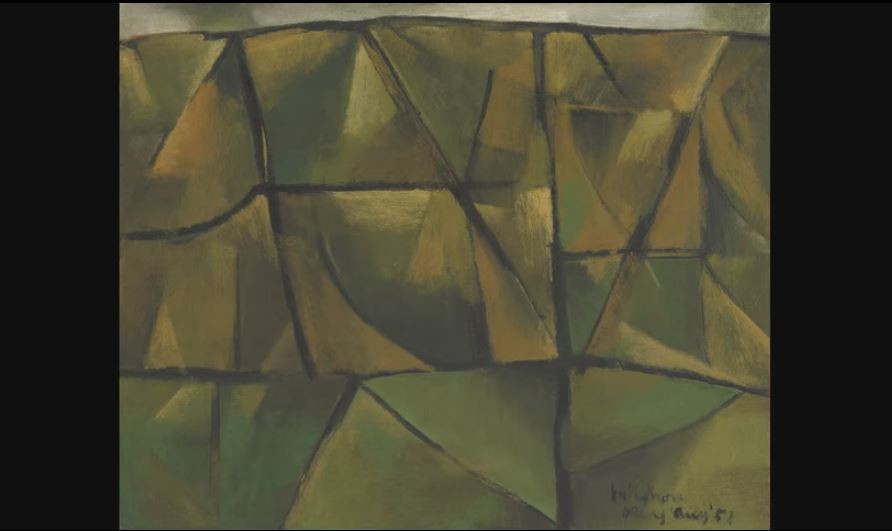
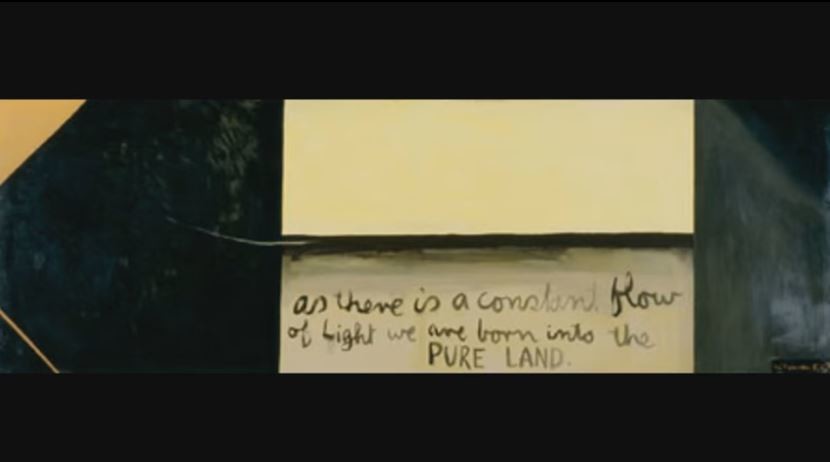
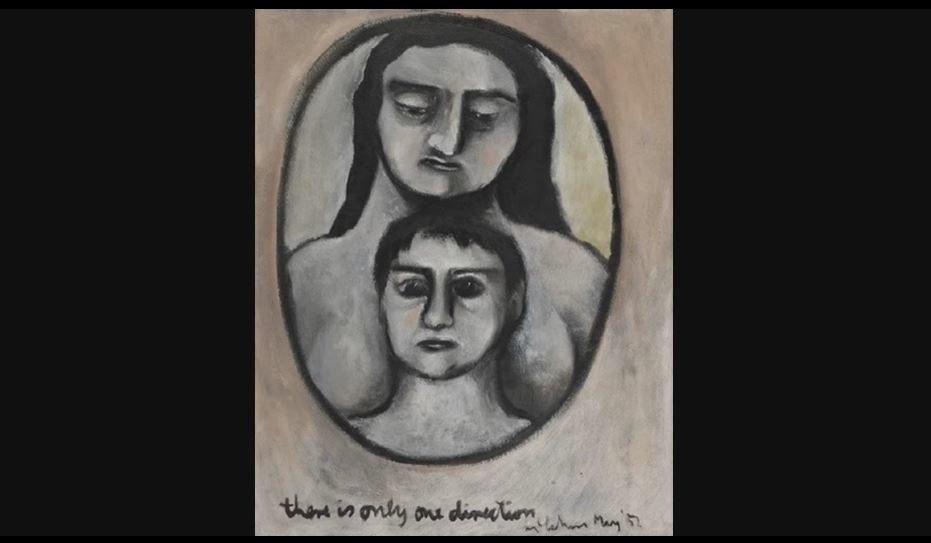
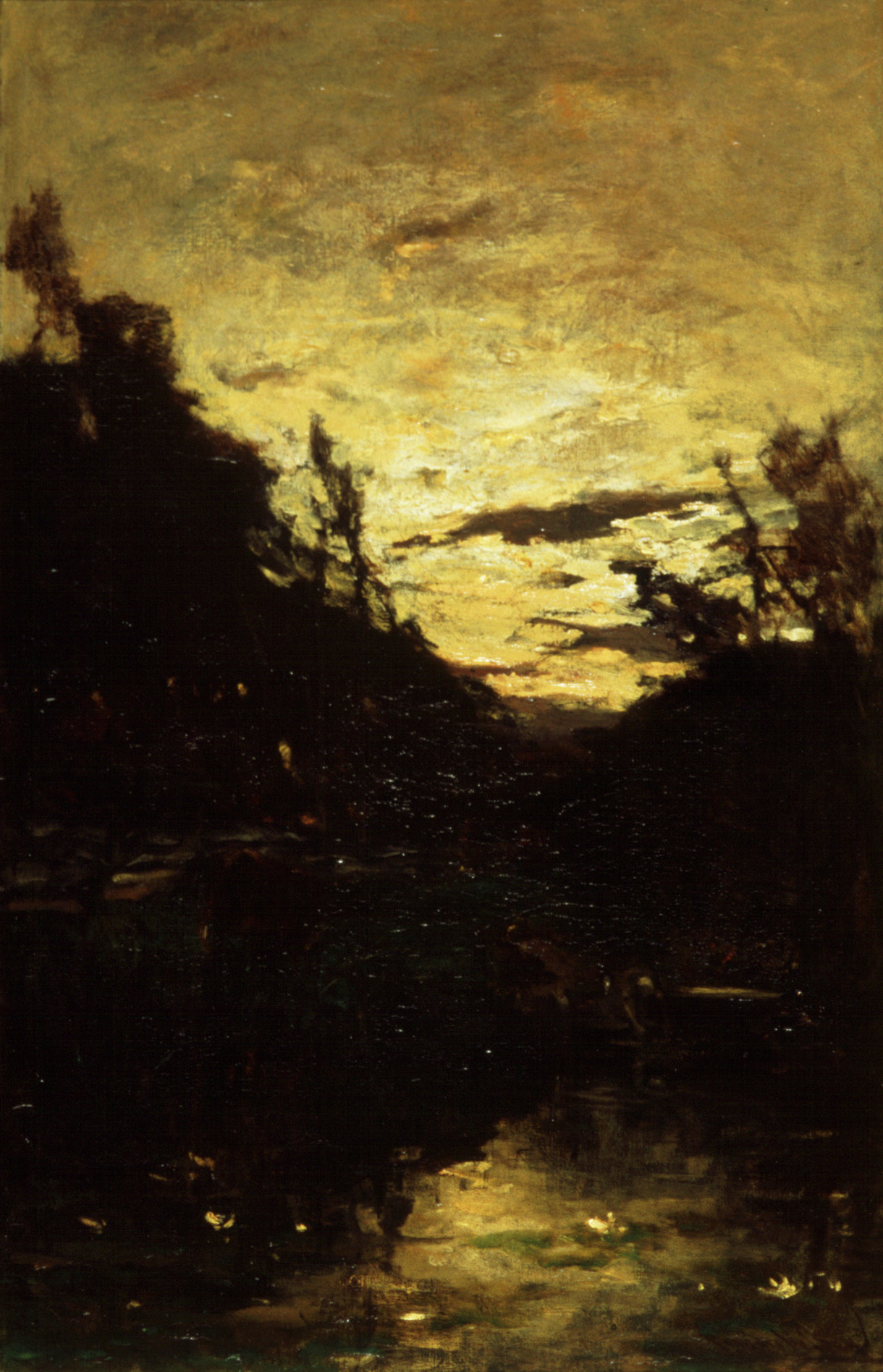
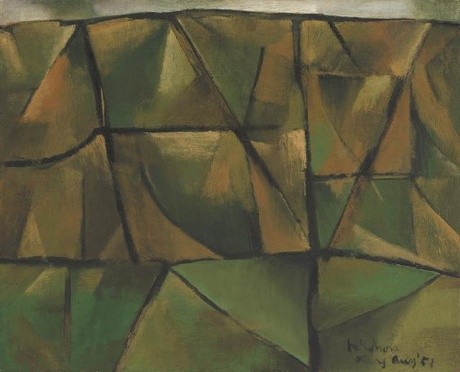
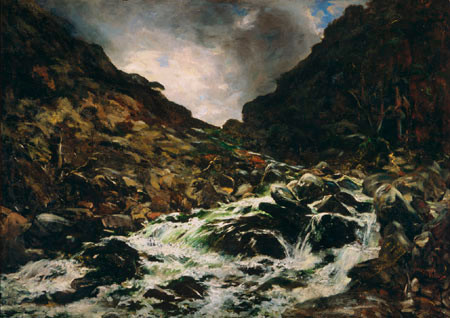
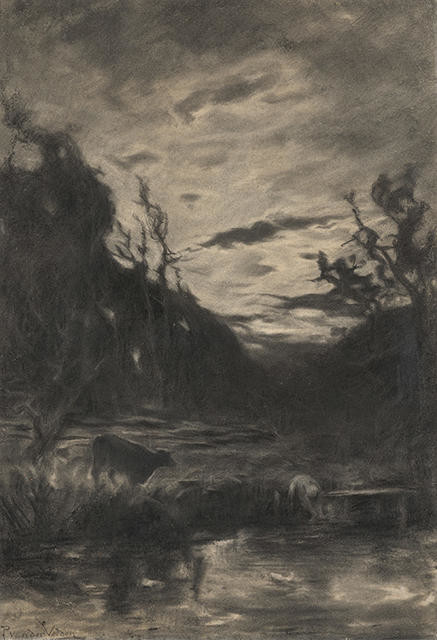
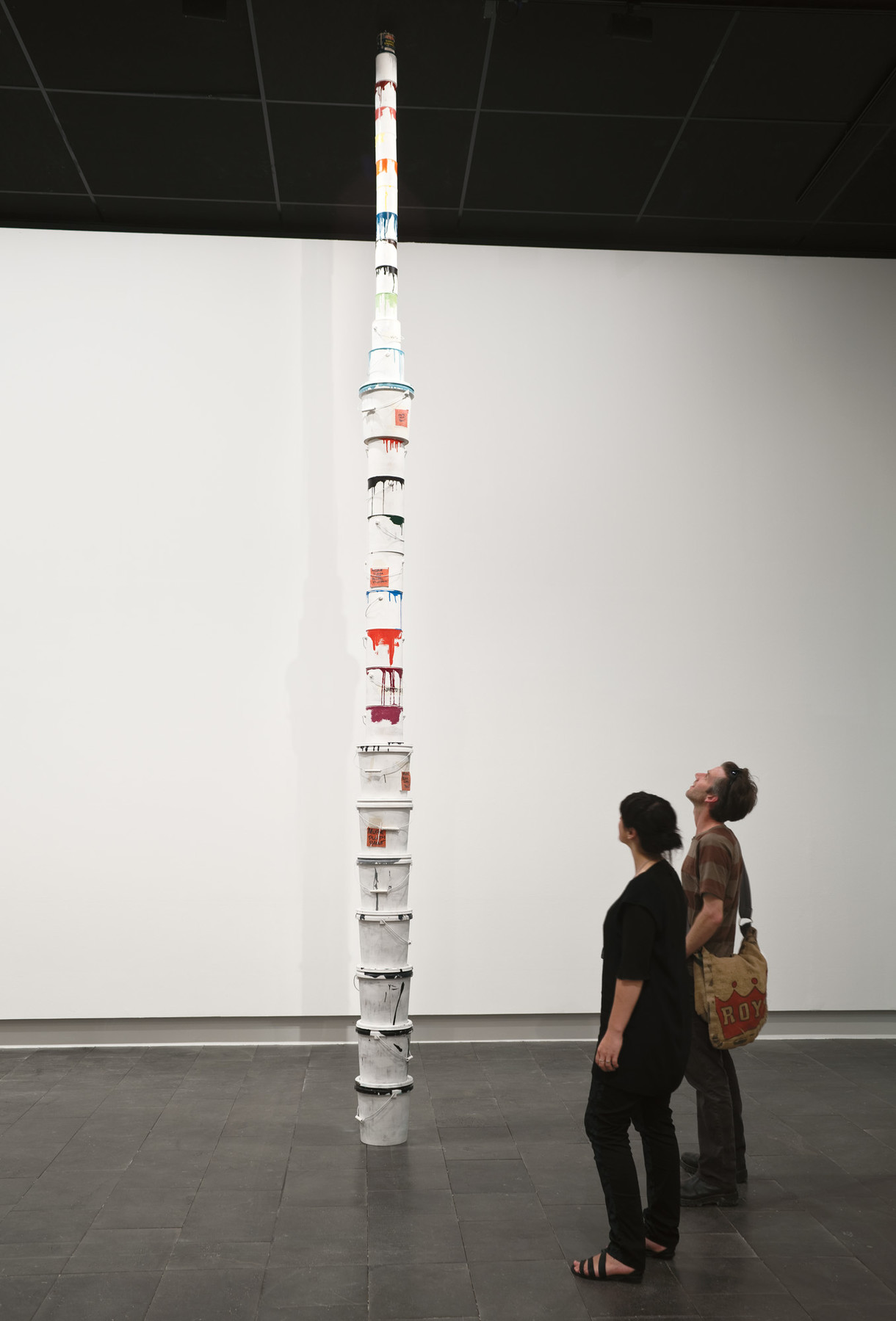
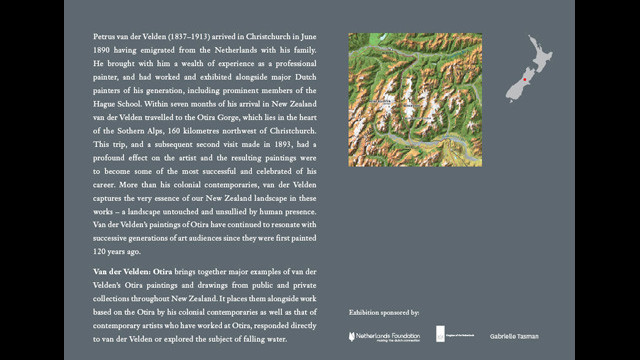
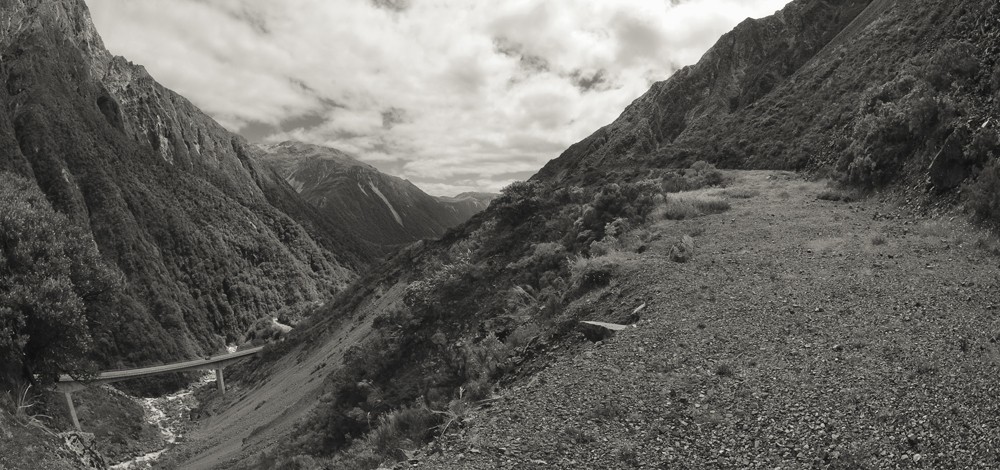
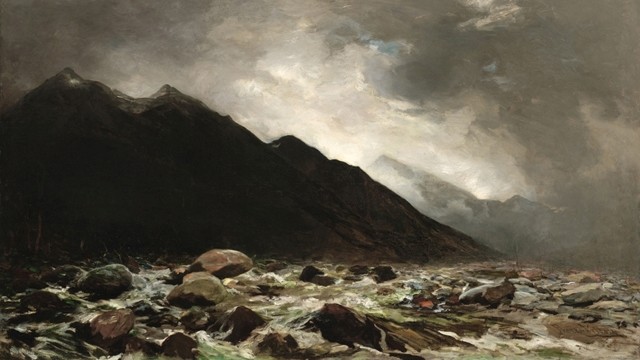
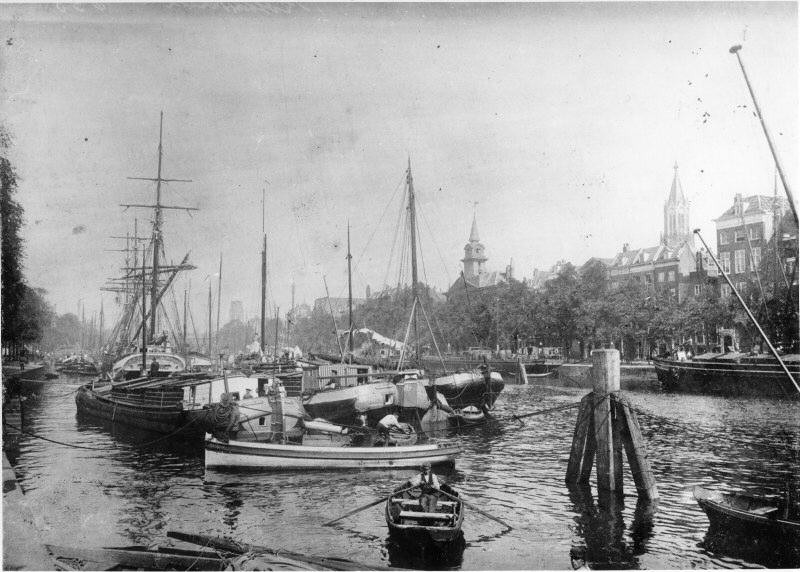
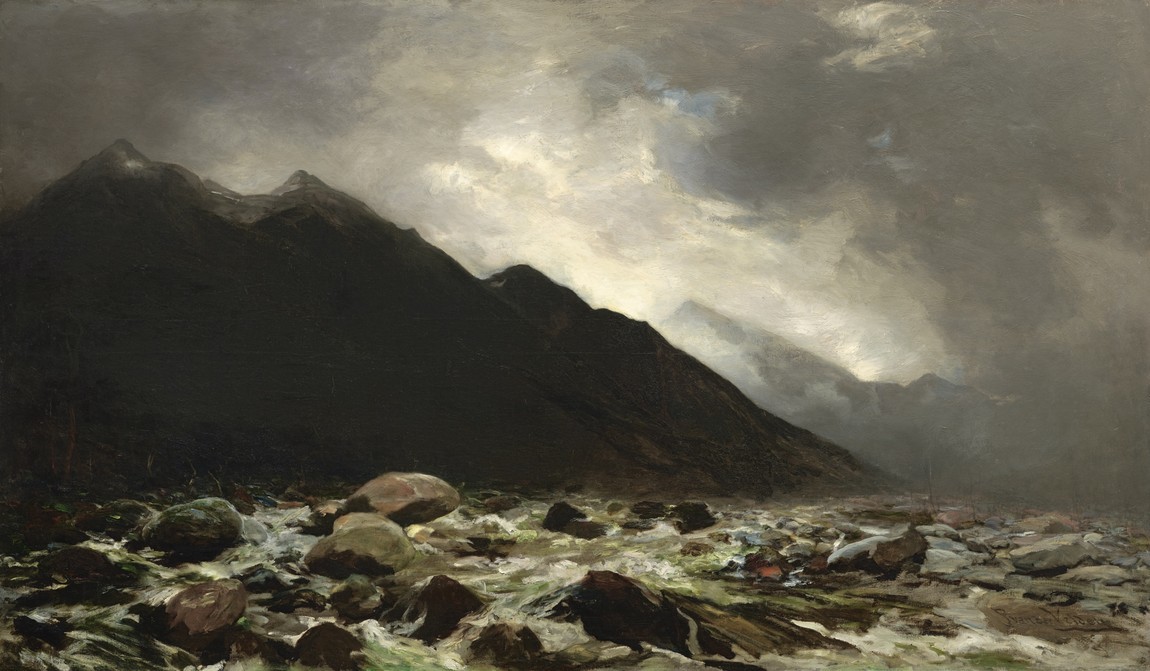
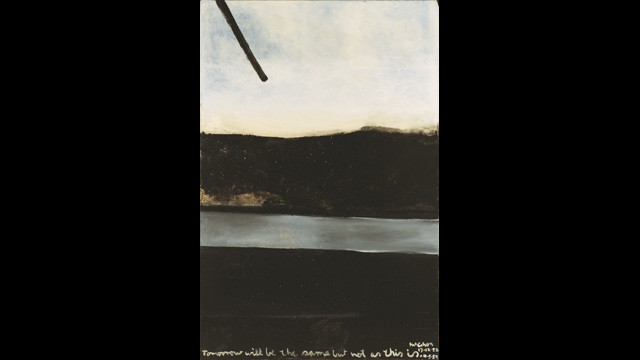
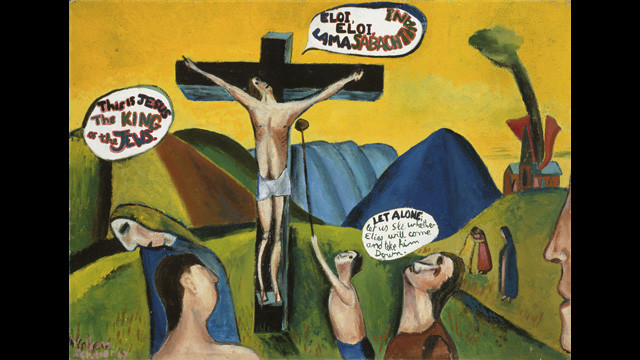
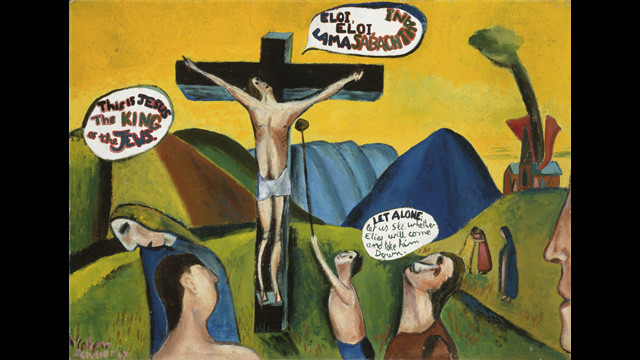
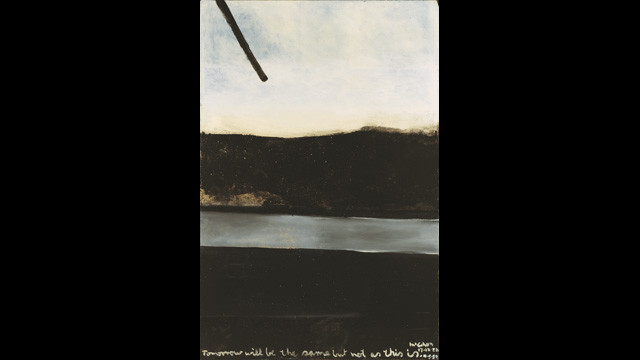
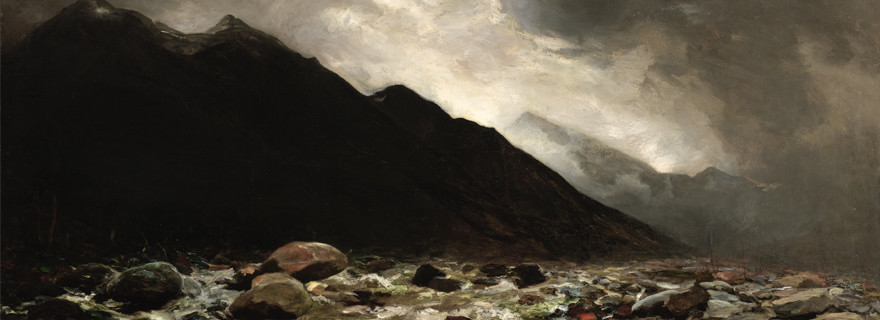
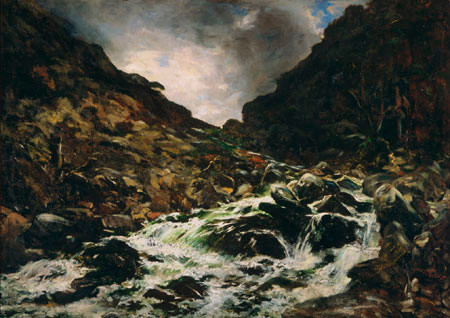
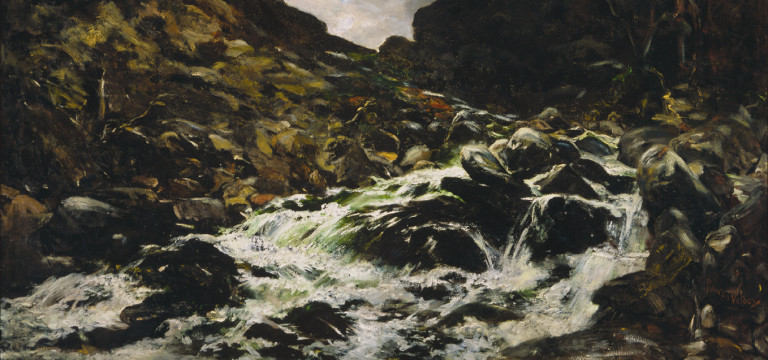
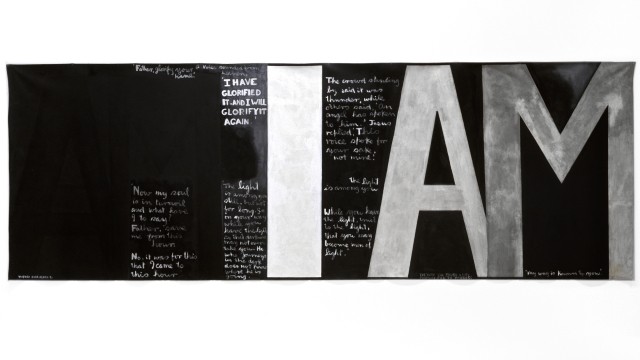
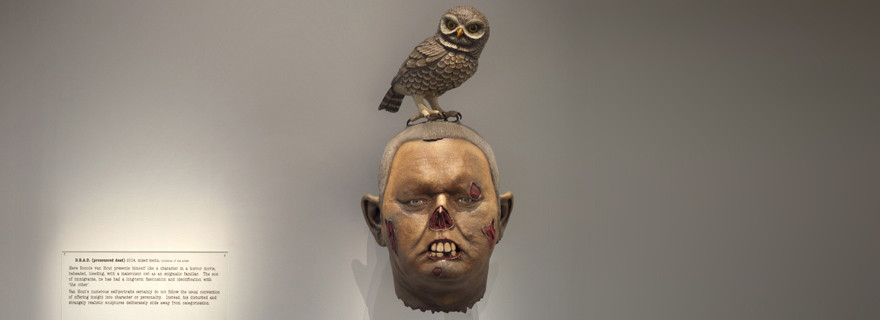
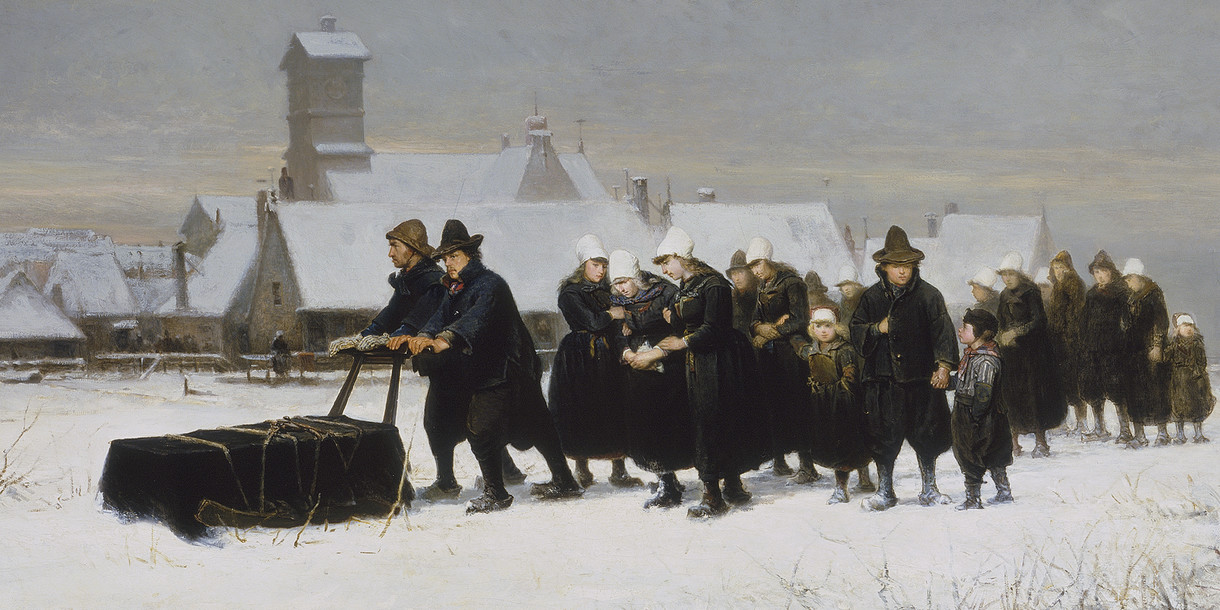
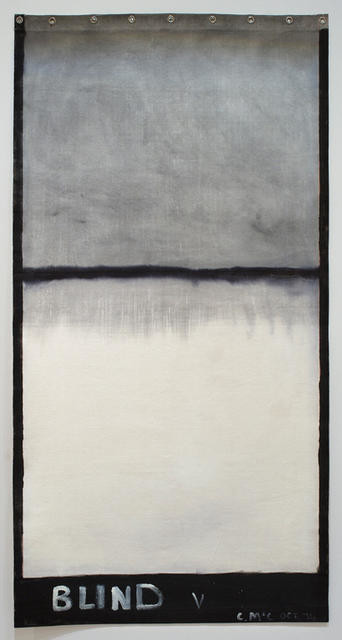
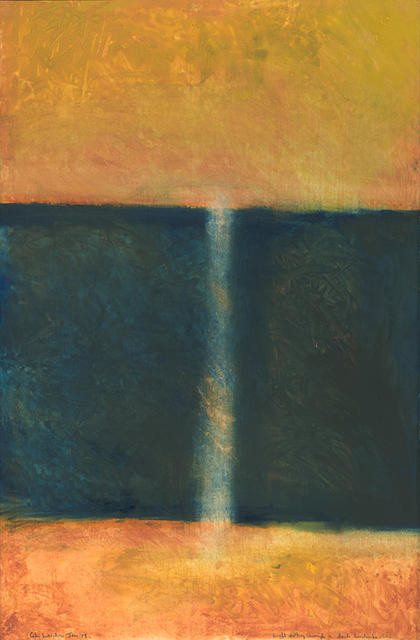
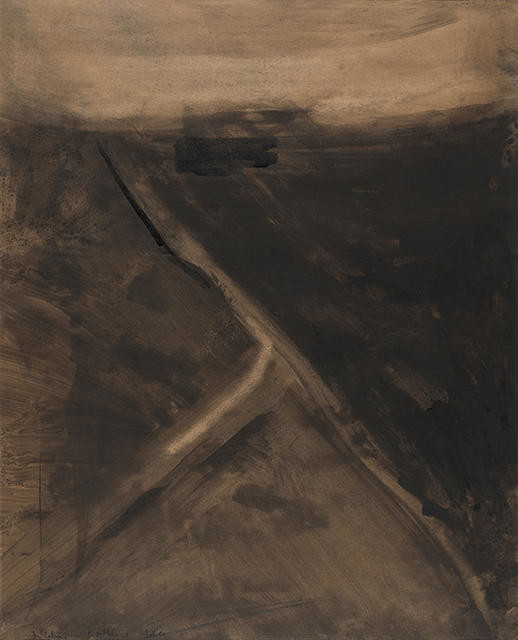
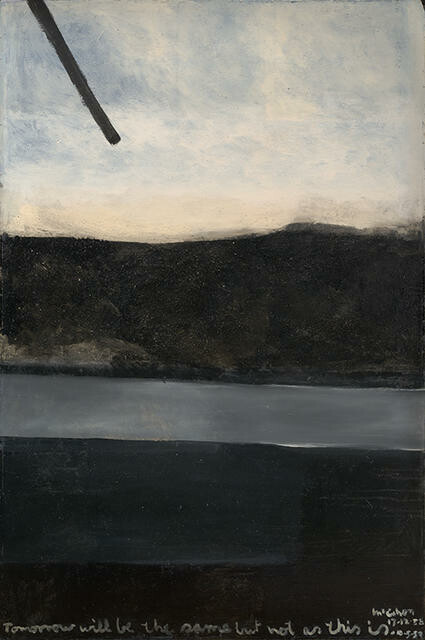
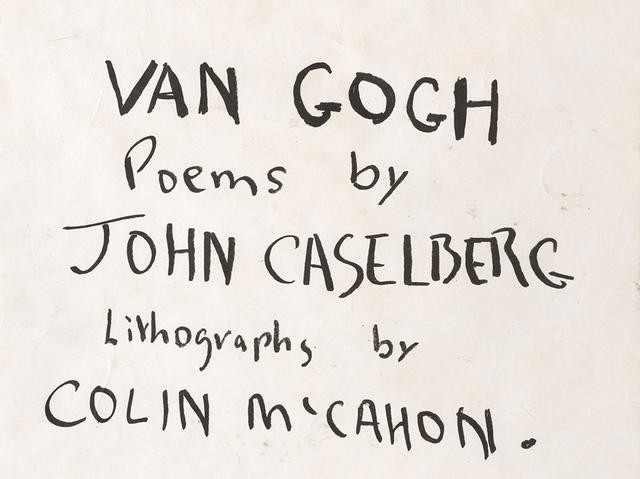
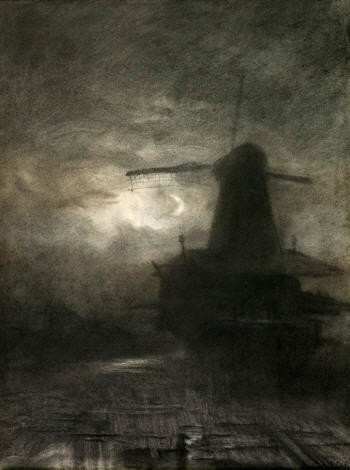
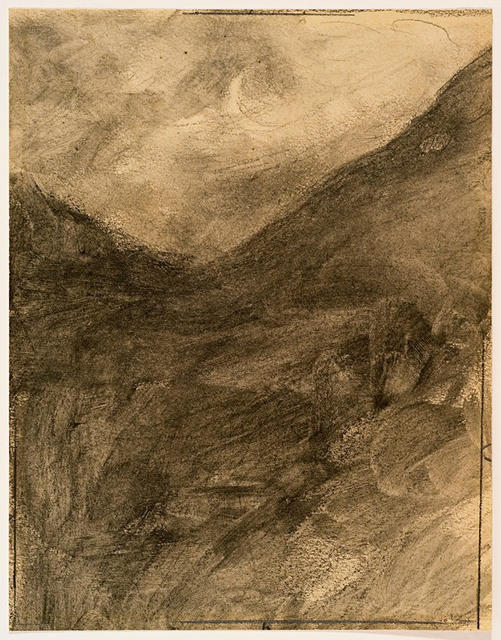
![Burial in the winter on the island of Marken [The Dutch Funeral]](/media/cache/53/c1/53c1843bcceaf9c7adc72a4a5032e2b9.jpg)
